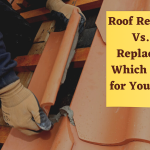Metal inert gas (MIG) welding is also sometimes referred to as gas metal arc welding (GMAW). It is a flexible welding process that has established itself as a mainstay in several sectors. Using a continuous solid wire electrode, MIG welding effectively fuses a variety of metals to produce strong, clean welds.
There are many models available, including Miller 211, BOSCH GMAW 200, KEMPPI EVO 200, etc. Understanding MIG welding supplies, Miller 211, and other available options is important in choosing the right equipment for your task. Therefore, we will learn about the different applications of these MIG welders in this article.
- Automotive Industry
In the automobile industry, MIG welding is extensively utilized, mostly for production and vehicle maintenance. This procedure is significant for connecting thin metals, such as steel and aluminum, which are frequently found in car bodywork. Precision control lowers the possibility of warping or distorting the thin metal sheets used in automobiles, trucks, and other vehicles.
Since MIG welding is quick and produces strong, long-lasting welds, it is highly valued in the automobile sector and is perfect for large-scale manufacturing. This method is used in parts like chassis parts, body panels, and exhaust systems. Furthermore, the increasing trend of employing lightweight materials in cars, such as aluminum, to improve fuel efficiency has been made possible by MIG welding.
As stated by Canadian Fabricating & Welding, research on welding has been sparked by the automobile industry in a number of areas. For instance, many companies and research groups have worked on the joining of mixed metals and high-strength steel. Recently, a team from the University of Waterloo and Liburid have been working on additive manufacturing technologies.
- Construction and Structural Work
The construction sector places a high value on structural integrity. Strong and dependable steel frames and support systems seen in infrastructure and buildings are made possible in large part by MIG welding. This technique frequently links steel beams, columns, and reinforcing bars, giving the strong, long-lasting welds required for major building projects.
The basic components of skyscrapers, bridges, and industrial structures are frequently welded using MIG welding. Due to its versatility in welding different metals, it may be used indoors and outdoors. Construction workers can rely on MIG welding’s strength and versatility to ensure that buildings and other structures satisfy safety regulations.
- Shipbuilding and Marine Industry
Shipbuilding involves a variety of welding procedures, which may be challenging. The fact that ship welders frequently have to go through cramped, small places is one of the main challenges.
When building a ship, the exterior of the hull is welded together, which allows the welders to work with some degree of mobility. However, when the different components are built up, the interior spaces become more confined. Examples of these regions are stairwells, hallways, and access rooms for electrical, plumbing, and other components.
Welding precisely in these tight spots can be very challenging. However, selecting the right MIG welding machine can help overcome this challenge. Since MIG welding produces strong, crisp welds on various metals for hulls and interior components, it is a preferred choice in shipbuilding.
The maritime sector frequently uses aluminum, a lightweight and corrosion-resistant metal, for various components of vessels. MIG welding is a very efficient way to deal with aluminum because of the precise control it provides. The maritime sector relies on MIG welding to satisfy functional and safety criteria, whether building small boats or huge cargo ships.
- Manufacturing and Fabrication
In the manufacturing and fabrication industries, MIG welding is the preferred method, especially for large-scale production. It is significant to produce goods like bicycles, metal furniture, appliances, industrial machinery, etc., because it can create consistent, high-quality welds. Everything from tiny bits and components to big assemblies may be joined with MIG welding.
The automation potential of MIG welding is one of its main benefits in production. It is possible to configure robotic MIG welding systems to boost production speed without sacrificing accuracy. Industries can fulfill strict production schedules and guarantee consistent quality across hundreds or thousands of welds thanks to this automation.
Several manufacturing units are now using cobots to increase productivity. Cobots or collaborative robots are trained to work in conjunction with humans. Therefore, they provide an opportunity for manufacturing plants to leverage automation without sacrificing labor completely. Data shows that using cobots on MIG welding can increase productivity by as much as 200%.
- Aerospace Industry
Precision and strength are essential in the aircraft industry. Aluminum and magnesium have good strength-to-weight ratios and are frequently utilized in aviation parts. Therefore, MIG welding is frequently used to join these lighter metals.
MIG welding is used because it can fuse lightweight materials with little distortion, which is why the aerospace industry prefers to use it. Additionally, it enables precise work on sophisticated assemblies where precision is important, such as fuselage components or turbine blades. MIG welding is an essential step in the production process because aerospace applications require both performance and safety.
Frequently Asked Questions
Why is MIG welding preferred in the automotive industry?
Since MIG welding enables exact welds on thin metals, frequently found in car bodywork, it is widely utilized in the construction of automobiles. It is also perfect for mass production in auto factories because of its speed and capacity to create strong, clean joints.
How does MIG welding contribute to the agricultural sector?
For the production and maintenance of agricultural machinery such as tractors, plows, and harvesters, MIG welding is essential. It offers robust, long-lasting welds that can survive the rigorous usage and challenging circumstances typical of farming settings.
Is MIG welding suitable for artistic and decorative metalwork?
Yes, MIG welding is frequently used to create neat, visually appealing joins in sculpture and art. With little post-weld cleaning, artists may utilize MIG welding to work with various metals to create anything from massive sculptures to delicate décor pieces.
MIG welding’s speed, adaptability, and capacity to produce strong, clean welds have made it an invaluable tool in a wide range of sectors. This welding technology, which provides a dependable and effective way to combine metals, has helped businesses across all industries grow.















